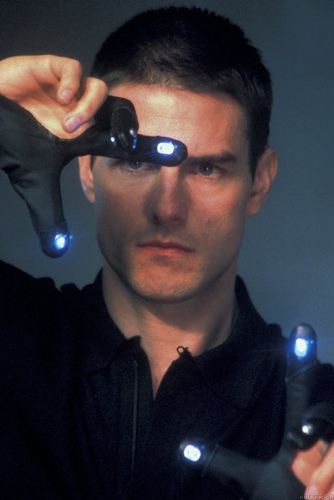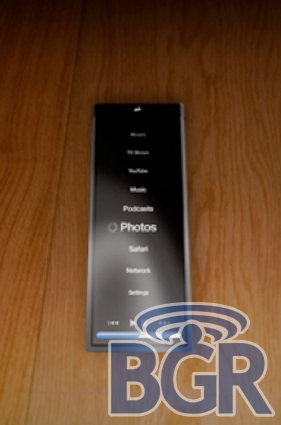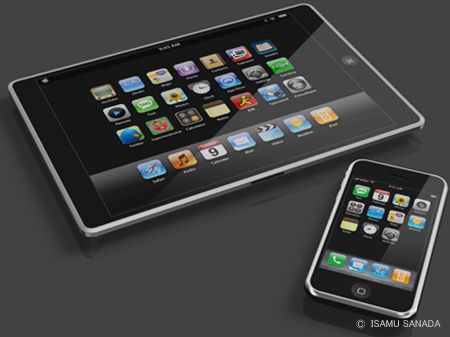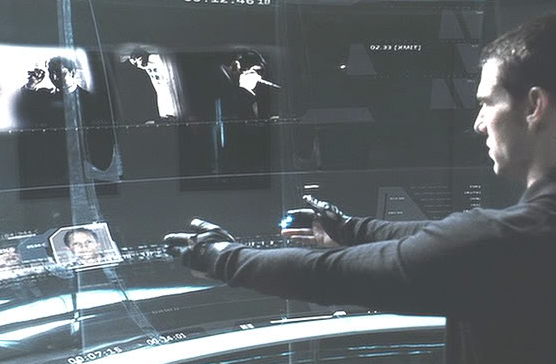 Anyone who has followed Apple news/rumors/patents over the past couple of years has probably noticed a certain trend emerging: Apple seems to be slowly shifting its entire line of products to touch-based computing. That is to say, it’s moving its products away from buttons and keys, towards manipulation through a touchscreen interface.
Anyone who has followed Apple news/rumors/patents over the past couple of years has probably noticed a certain trend emerging: Apple seems to be slowly shifting its entire line of products to touch-based computing. That is to say, it’s moving its products away from buttons and keys, towards manipulation through a touchscreen interface.
While obviously, MacBook trackpads have used some level of touch for a long time, this trend really started with the iPhone, which presented the first excellent use of multi-touch in a consumer device. From there, Apple slowly began adding multi-touch support to the aforementioned notebook trackpads, to the point where they all now feature it. And then of course, there’s the iPod touch, which is an iPod with multi-touch support.
But where things really start to get interesting is when you look at Apple’s patents and the rumors that spin out of them. If you name any Apple product now, you’re almost for sure able to find some sort of rumor that it will be gaining touch support in the future. In fact, a few more have hit just this week; including a touch screen remote for the Apple TV and a new multi-touch enabled mouse.
Touch Remote
These latest two make varying degrees of sense. Apple’s current remote (that tiny white one), which comes with the Apple TV and as an additional add-on with any Mac, is pretty bad. It’s especially bad for the Apple TV, which now has so much content on it, that it can take dozens of clicks to find what you want. And God-forbid you have to search for anything (nothing is worse than text-input on that thing). But Apple came up with a very smart solution for it: Turn the iPhone and iPod touch into a remote. The result is brilliant.
 But would Apple really create a new touch device that is only a remote? Such a peripheral would undoubtedly be exponentially more expensive than what it costs to produce the current Apple remote. But if Apple is finally ready to consider the Apple TV a real product (rather than just a “hobby”), it could well put in the effort to perfect a new kind of remote for a new kind of living room experience.
But would Apple really create a new touch device that is only a remote? Such a peripheral would undoubtedly be exponentially more expensive than what it costs to produce the current Apple remote. But if Apple is finally ready to consider the Apple TV a real product (rather than just a “hobby”), it could well put in the effort to perfect a new kind of remote for a new kind of living room experience.
Boy Genius Report, which is reporting on the rumor, says it comes from the same source that was dead-on in naming some of the iTunes 9 features weeks before that product launched.
Touch Mouse
A touch-enabled mouse is much more interesting to me. Some of you may recall my rant a few months ago against Apple’s Mighty Mouse. The device, quite frankly, sucks. And really, it continues a line of Apple mice (or whatever the plural of “mouse” is) that have been laughably sub-par. And what’s interesting about that is the reason they have been sub-par: Because Apple did not want to add multiple buttons to the thing.
So in that regard, a multi-touch mouse makes perfect sense. It could eliminate the need for Apple to add more buttons to make a competent mouse, while at the same time adding new input functionality that we probably don’t even realize we’re missing with current mice (swipe left, swipe right, pinch to zoom, anyone?).
And the worst part of the Mighty Mouse, in my opinion, is the track ball. The reason it’s awful is because it gets dirty way too easily, and it’s annoying to clean. Again, a mouse with say, a multi-touch top, would eliminate that ball, and thus, the headache.
Touch Tablet
Of course, the big fish in the touch sea is Apple’s long-rumored tablet. More rumors today suggest that device could be announced in January 2010 (which is what earlier rumors suggested as well), and would be released sometime around the middle of 2010.
I don’t think I’m going out on any limb by assuming the device is real at this point (we, along with many others, have been hearing about it for months now). So when it does launch, it will likely be the most important test yet of Apple’s touch goals. For all intents and purposes it will be a computer that is just a 9 or 10 inch screen. It undoubtedly will not have a physical keyboard, which means it will be entirely touch-based.
 How consumers react to this will be important. I would bet that at first, many will wish there was a physical keyboard to go along with it (and maybe Apple would even offer such an accessory as an option add-on). But then, as they get used to it, many of those people will forget all about the keyboard.
How consumers react to this will be important. I would bet that at first, many will wish there was a physical keyboard to go along with it (and maybe Apple would even offer such an accessory as an option add-on). But then, as they get used to it, many of those people will forget all about the keyboard.
The same thing has happened with iPhone. While plenty of people still bitch about its lack of keyboard, most of those people seem to be those who don’t actually have one (yes, there are exceptions), and/or haven’t used the touch keyboard extensively. Many iPhone users I talk to thought they would hate having no keyboard, but now would just consider it a waste of space.
Touch Beyond
And the idea that a physical keyboard is a waste of space is an interesting one, and one that I definitely agree with. The notion of a physical keyboard in this day and age is kind of silly. Back in the day they made sense as keyboard keys were physically connected to typewriter letters, and pushing one would produce type. But today, on computers, touching a key simply triggers a digital signal. Really, the keys are not necessary beyond our desire for tactile feedback. And they are a huge waste of space.
While it may be hard to imagine right now, eventually there will not be physical keyboards. Apple’s tablet may well be the first product that will get users accustomed to this idea. And yes, as I said, plenty will bitch. But eventually, technology will improve, and virtual tacile feedback will improve, and there will be no need to take up so much surface area on any device with physical keys that really serve no purpose.
That’s not to say that all computers will look like tablets. Certainly, there is something to be said for the ergonomics of the notebook — the keyboard on the bottom with screen on top. If you had to type long emails on a tablet, you’d either be looking straight down or your arms would get very tired. But eventually, notebooks will be folding devices with two screens, one where the current screen is, and one where the current keyboard is. This bottom screen could then be turned into a virtual keyboard as needed. Otherwise, it would be a touch manipulation area — or even just a screen.
Or another idea is to have a tablet computer which could be converted into a keyboard with a screen that is then projected on some surface. Or vice versa; a screen with a virtual keyboard projected on some surface. Stuff like this graces the pages of publications like Popular Science every month, and it’s probably closer than we think, and certainly closer than some of us would like to think (remember: people don’t like change).
 Touch Microsoft
Touch Microsoft
Of course, Apple rival Microsoft is working on a lot of interesting things with touch computing as well, including the Surface and touch-support in Windows 7.
Microsoft’s first true test of touch in its consumers products is the Zune HD. Early reviews are good, and you can probably expect Microsoft to pass along its notes on the device to some of its phone-making partners.
Meanwhile, the Surface is an interesting device but it’s still too much of a gimmick at this point. There needs to be third-party software support (we’ve been told that has been coming forever), and more importantly, the thing needs to be thousands of dollars cheaper if anyone is ever expected to actually use it.
Microsoft’s TouchWall is probably the much more interesting technology to watch as it relates to consumers. But there hasn’t been much word on that in a long time.
Microsoft’s touch device getting the most buzz the past couple of weeks is the Courier tablet. Unlike Apple’s tablet, which is expected to be media-centric, it appears the Courier will be a virtual notebook of sorts that you manipulate with both your hands and a special pen. It looks very cool, and it’s apparently running Windows 7. And that means it’s likely much closer than the mock-ups and videos may have you believe.
In fact, it could come as soon as mid-2010, just like Apple’s tablet, sources tell Mary Jo Foley. If that’s true, Microsoft looks to be at the leading edge of the touch revolution right alongside Apple. But because Apple has much tighter control over its entire ecosystem, it will undoubtedly be able to fully shift towards touch computing first, and as such, could well become synonymous with the technology (just as the iPhone has with multi-touch, even though other devices use it).
 The Golden Age Of Touch
The Golden Age Of Touch
Computing, as we know it, is on the verge of a transformation. The input devices of yesteryear finally look ready to be replaced by methods that are not based on technologies that are decades (the mouse) or even centuries (the keyboard) old.
It won’t happen right away, but it is starting to happen already. We just need devices like the ones listed above to serve as gateway drugs to touch.
I, personally, can’t wait for my Minority Report-style computer system (yes, I seem to bring this up every few months). But for now, I’ll settle for a multi-touch mouse. Oh, and a touch tablet. No matter who makes it.
[Minority Report images: 20th Century Fox/Dreamworks]